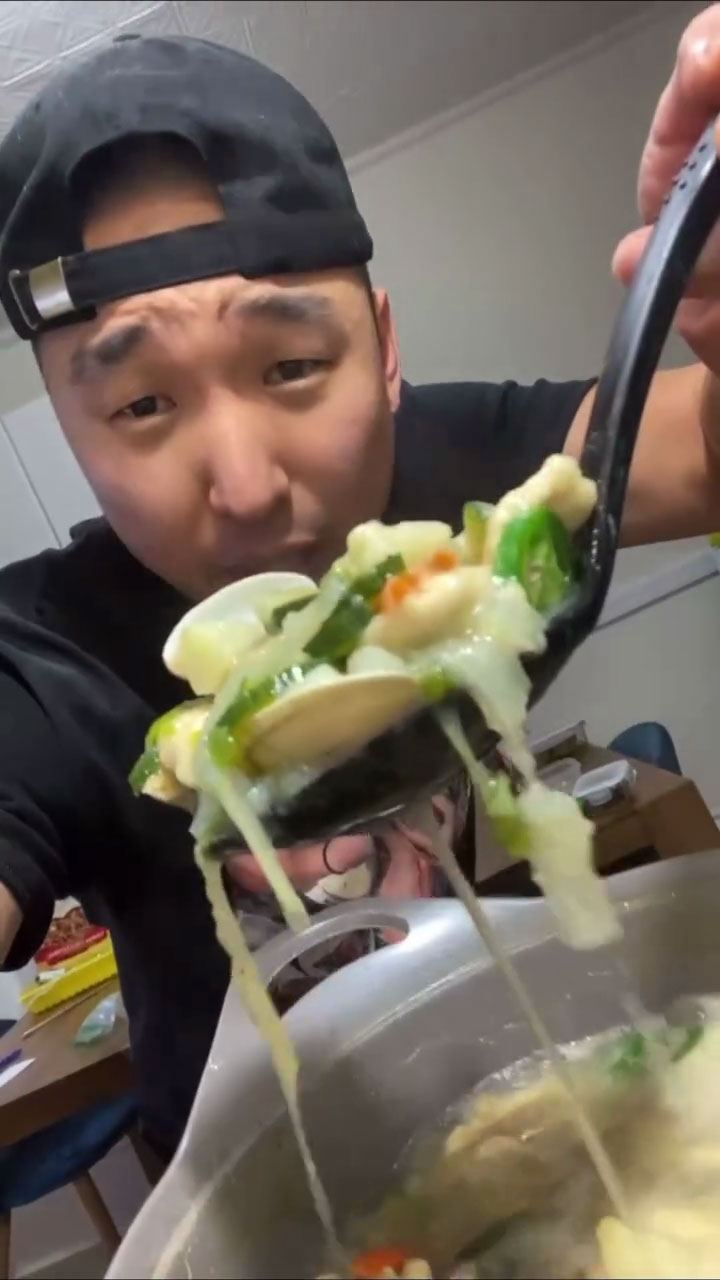
Sujebi is a traditional Korean noodle soup that consists of a thick, umami-filled broth, thin hand-torn noodles, and a variety of vegetables. It is an underrated comforting soup that many Koreans love.
Korea is a country that loves a wide range of soups. There are mild ones like seaweed soup, deep broths like galbitang, and strong ones like doenjang jjigae. Sujebi is no different—it is a light and warm soup that is also deeply umami-filled because of the Korean soup stock. The broth gets ingrained in the noodles and vegetables as you continue to boil it.
This dish is commonly served during cold winter nights. The soft and chewy noodles that soak all the flavor are super comforting and the vegetables just fill you up for a wholesome meal. And it’s super easy to make!
What is Sujebi Made Of
Disclaimer: I get a small commission at no additional cost to you when you make a qualified purchase under the affiliate links.
Hand-torn Noodles

The hand-torn noodles are made of flour, water, and salt. But no matter how simple the ingredients used, the magic here lies in kneading the dough about 50-100 times to make it stretchy and chewy.
As you stretch it, you need to make it thin before tearing it, so that it has a better texture when cooked. That will also help absorb all the flavor of the soup. Other than that, no other techniques or equipment are needed to make this, so easy!
Korean Soup Stock
This is another component that makes the noodles what it is. Classic Korean soup stock is made of dried kelp (dashima), dried shrimp, dried anchovies (head and gut removed), and Korean radish.
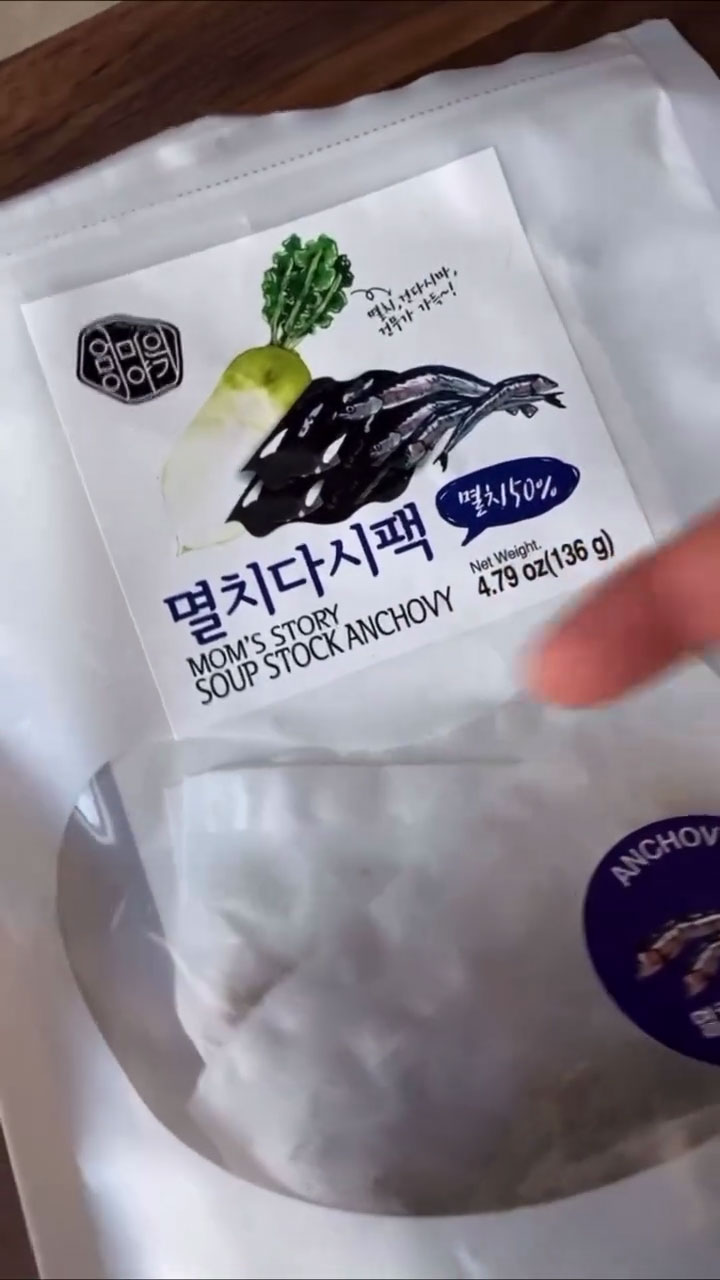
If you don’t want to make it from scratch, there are ready-to-use soup bags you can buy from Hmart. Just boil the little packets and they are good to go! This soup stock is used in many Korean dishes like Tteokbokki, Fish Cake Soup, Kimchi Jjigae, etc. which gives it the unique flavors that make it Korean.
Seasoning the stock with soup soy sauce and salt is enough to make it tasty. Feel free to adjust according to your preference.
Vegetables
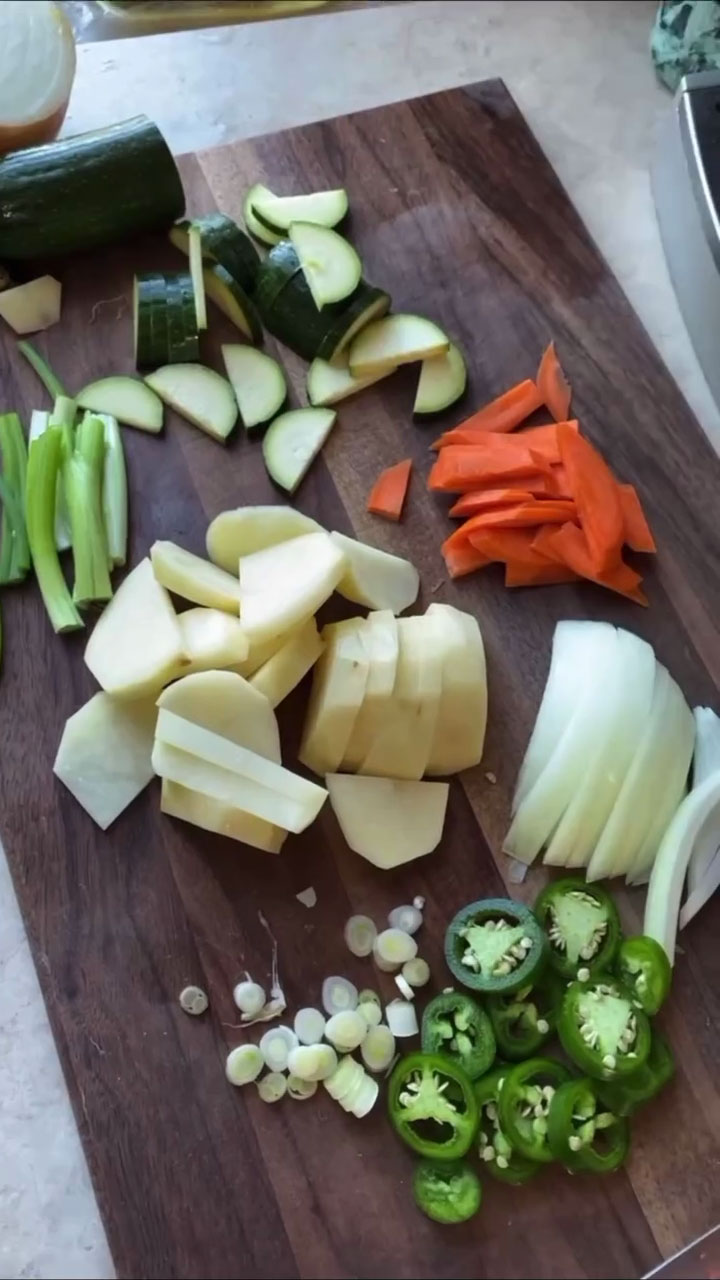
For the vegetables, there is a variety that you can use in sujebi. I like adding onion, scallions, carrots, zucchini, and potatoes, or 500 grams of vegetables in total. If you find that this is a lot, you can simply use potatoes and green onions only, the rest are a bonus. The vegetables will allow you to enjoy different textures in every bite.
Short-Neck Clam
While it is okay to keep the soup vegetarian or vegan by skipping this, I like to add clams as an additional protein option that also adds flavor to the soup.
How to Make Sujebi Noodle Soup
Make the Sujebi Dough
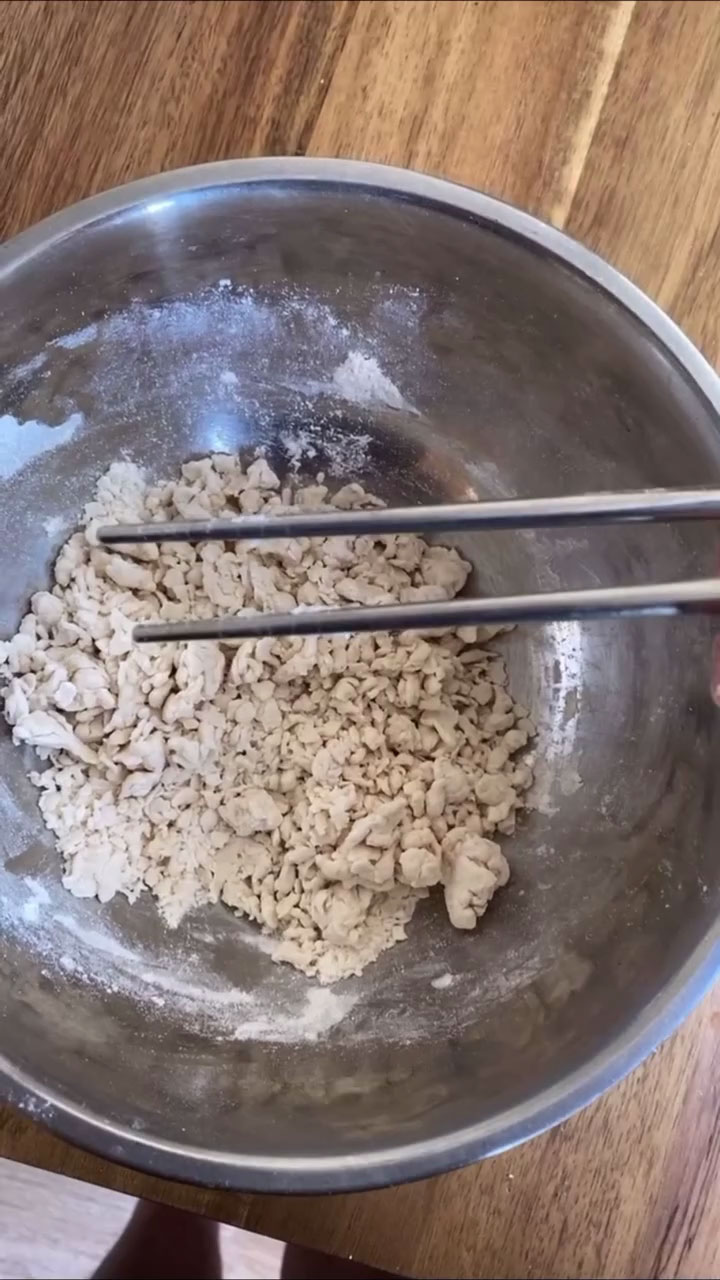
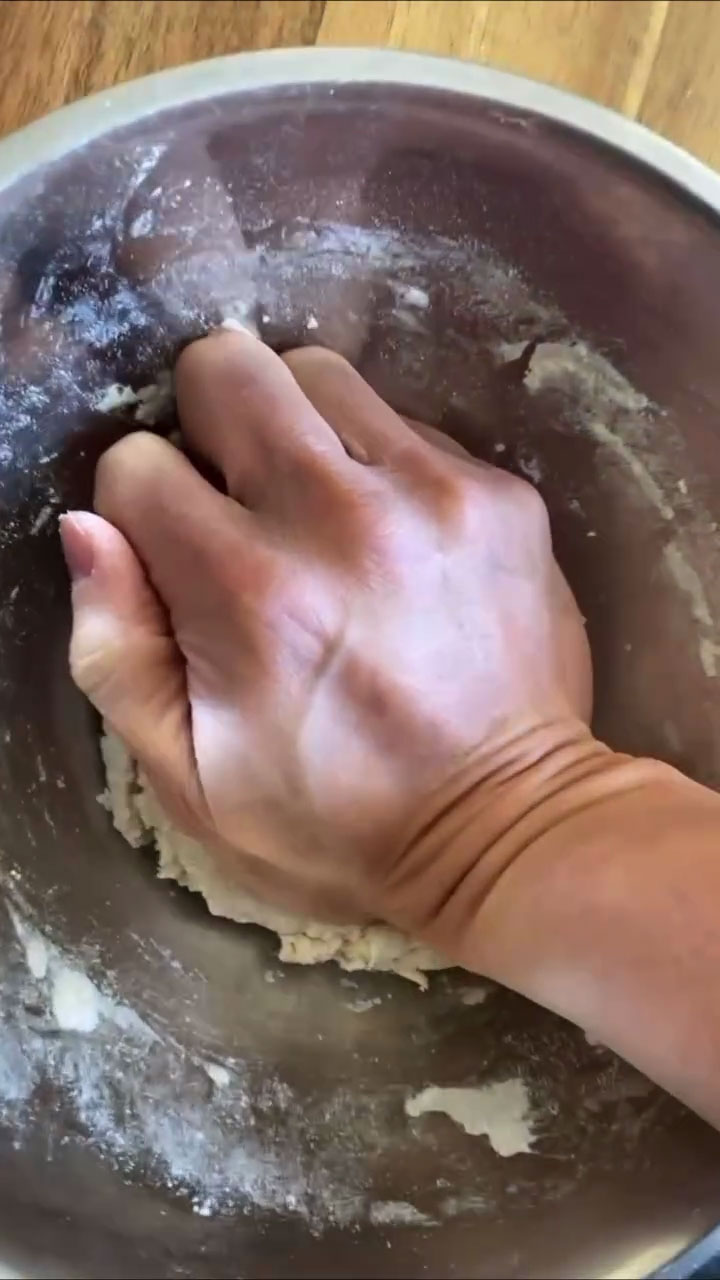
To make this hearty soup, start with the dough. Combine flour, water, and salt. Mix the flour with a fork or chopstick until it is crumbly. Once crumbly, use your hands to compress it together so you can start kneading.

Knead by pressing down with the bottom of your palm and then turning the dough, repeat this process about 50 to 100 times. Yes, it will take time and it may hurt your hand but this step is necessary to make the noodles chewy which is its distinct quality.
Once done kneading, wrap or place in a zipper bag then let it sit in the fridge for 30 minutes to an hour for the dough to fully come together.
Make the Sujebi Broth
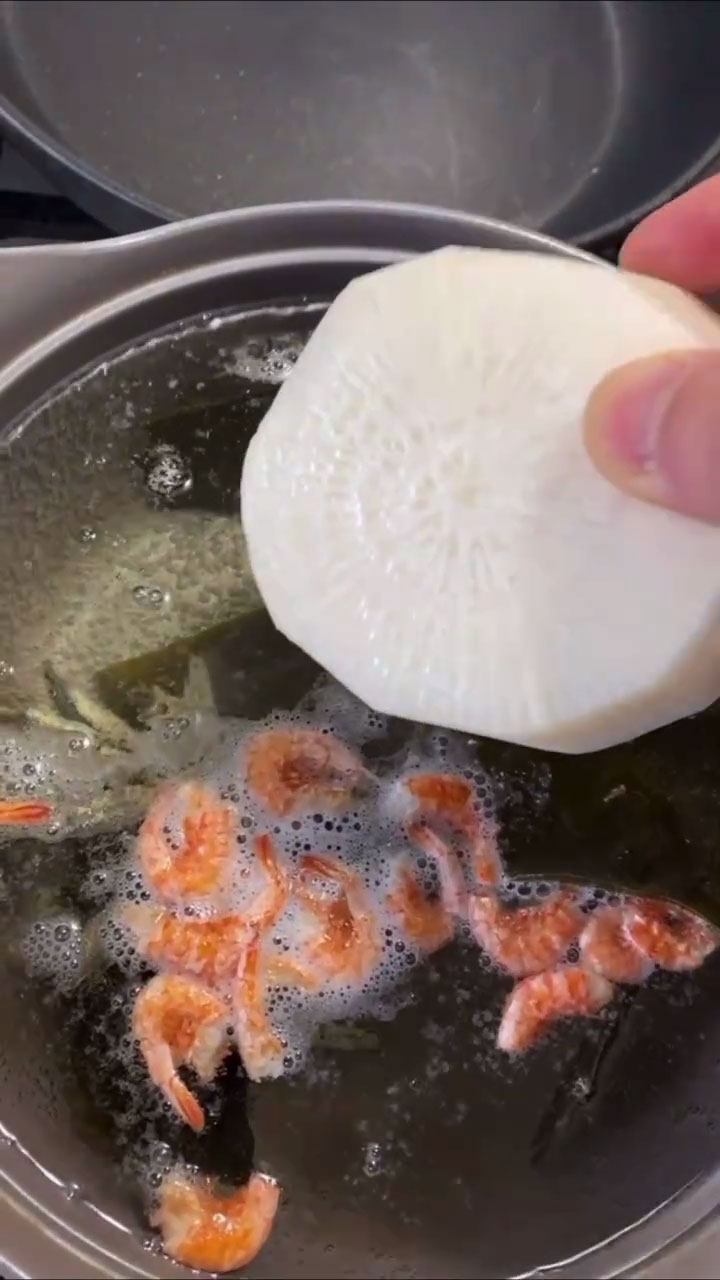
In a deep pot boil dried kelp, dried shrimp, dried anchovies, and Korean radish. Make sure that you remove the head and gut of the anchovies as they are bitter and must not be included in the broth.

Boil the dried ingredients on high heat for 20-30 minutes. This should extract all the flavors and umami from each item. Drain and discard all dried items, then place back the stock into a deep pot.
Making Sujebi Noodle Soup
Prepare the vegetables—chop the jalapenos, julienne the onions, slice into moon-shapes the zucchini and potatoes, make thick matchsticks of the carrots, and chop half of the scallions and slice the other half into 3-inch pieces.
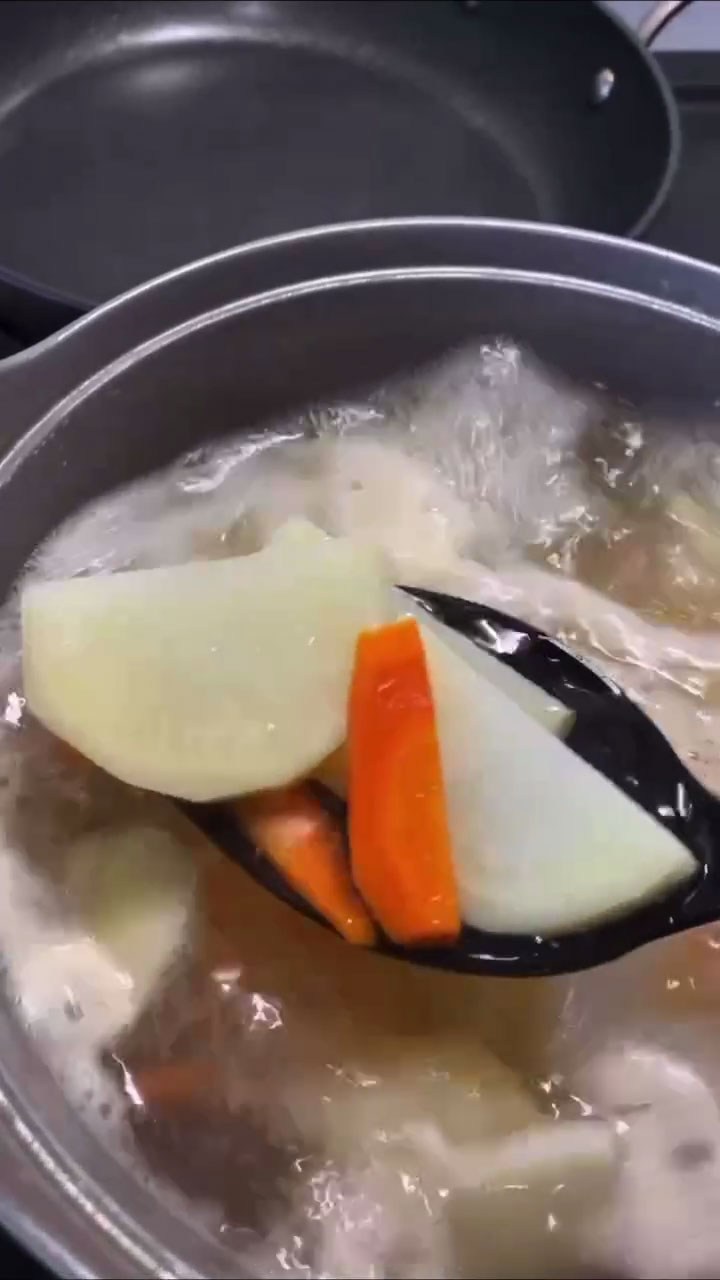
Once the vegetables are done, bring the soup stock to boil and add the potatoes and carrots first. They cook the longest, so they go in first. Allow it to cook for 5 minutes.
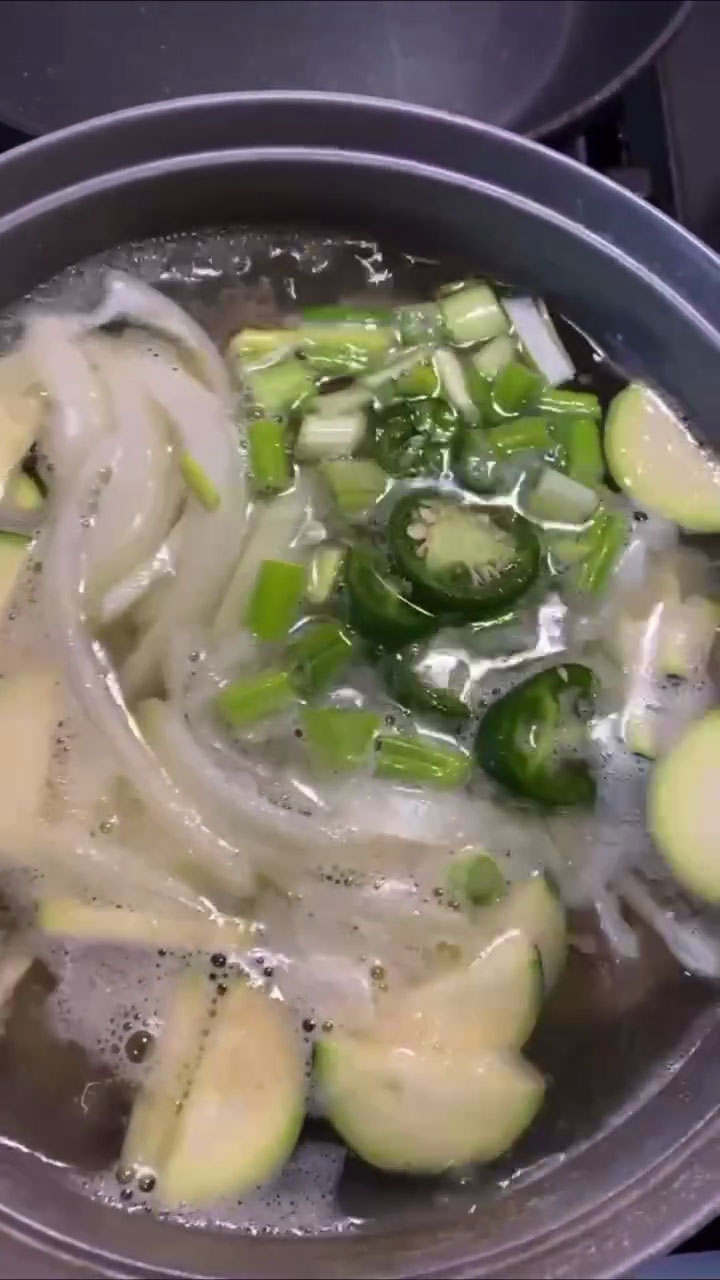
Following that, add the rest of the vegetables and let it boil for a couple of minutes. Add the clams afterward. Season the soup with soup soy sauce and salt.
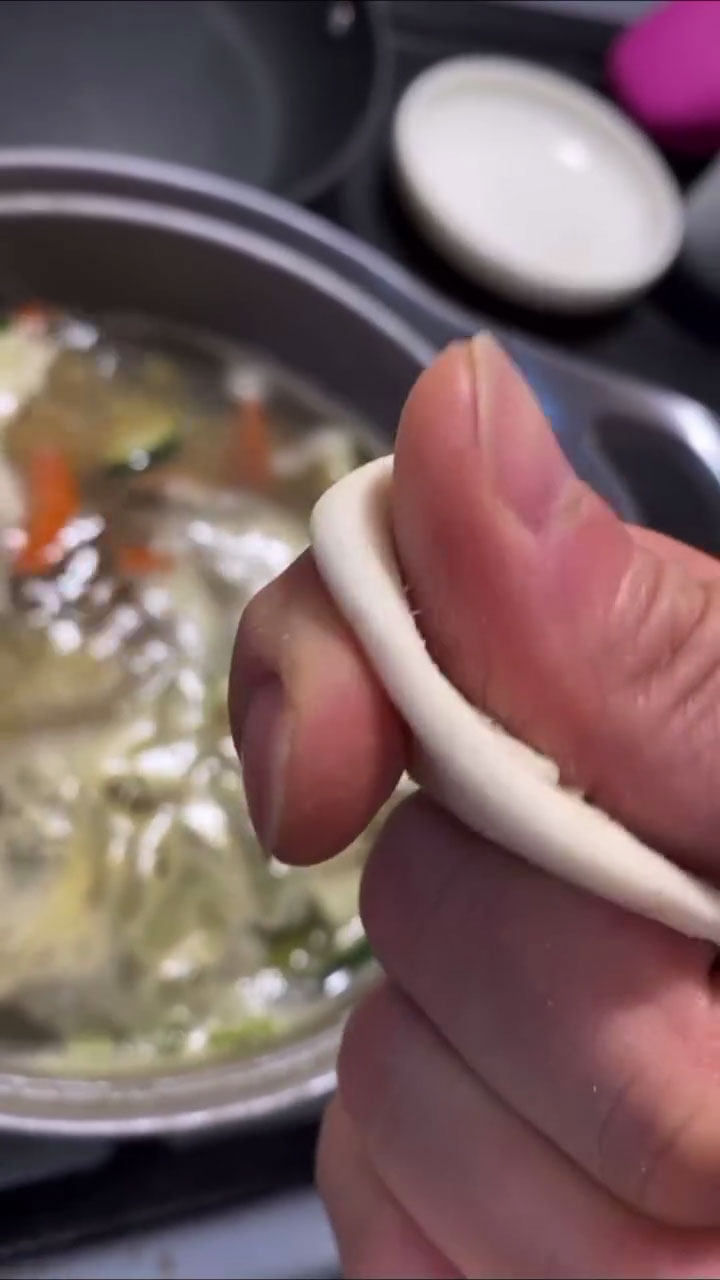
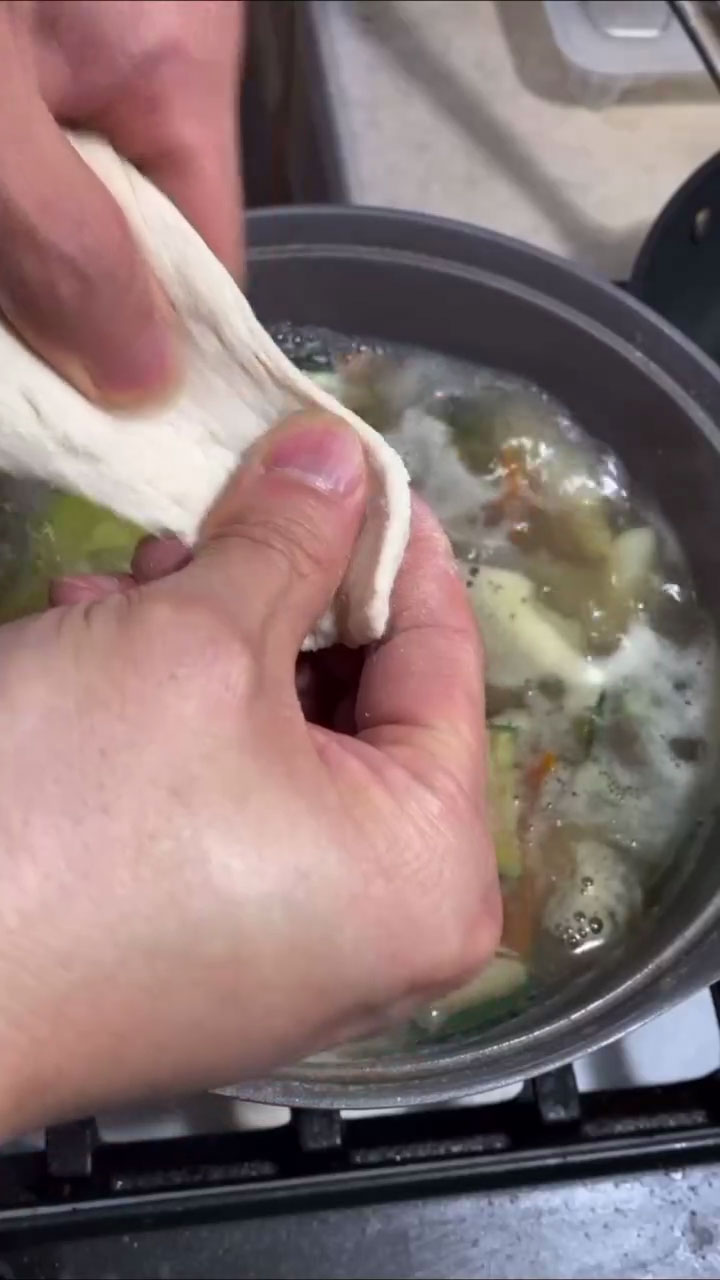
Now, using your thumb and index finger, press it together with the dough to make a thin piece. Break off the thin piece and drop it into soup. Repeat the process until you run out of dough. Allow the noodles to cook for about 5 minutes, stirring occasionally so they don’t stick. Once they float on top, that’s when you know it’s cooked.
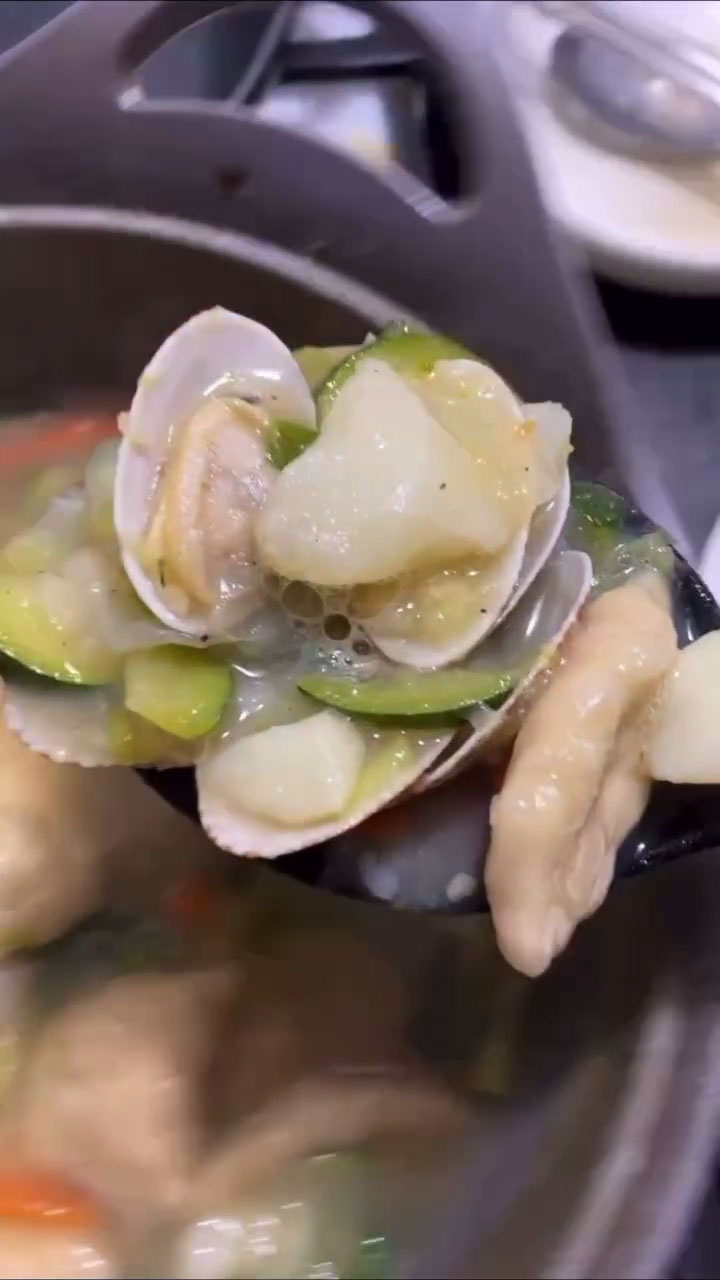
Taste the soup and adjust with salt as needed. This should yield a clear yet slightly thick soup that is deeply savory and filled with umami. Garnish with more scallions and enjoy!
What to Eat with Sujebi
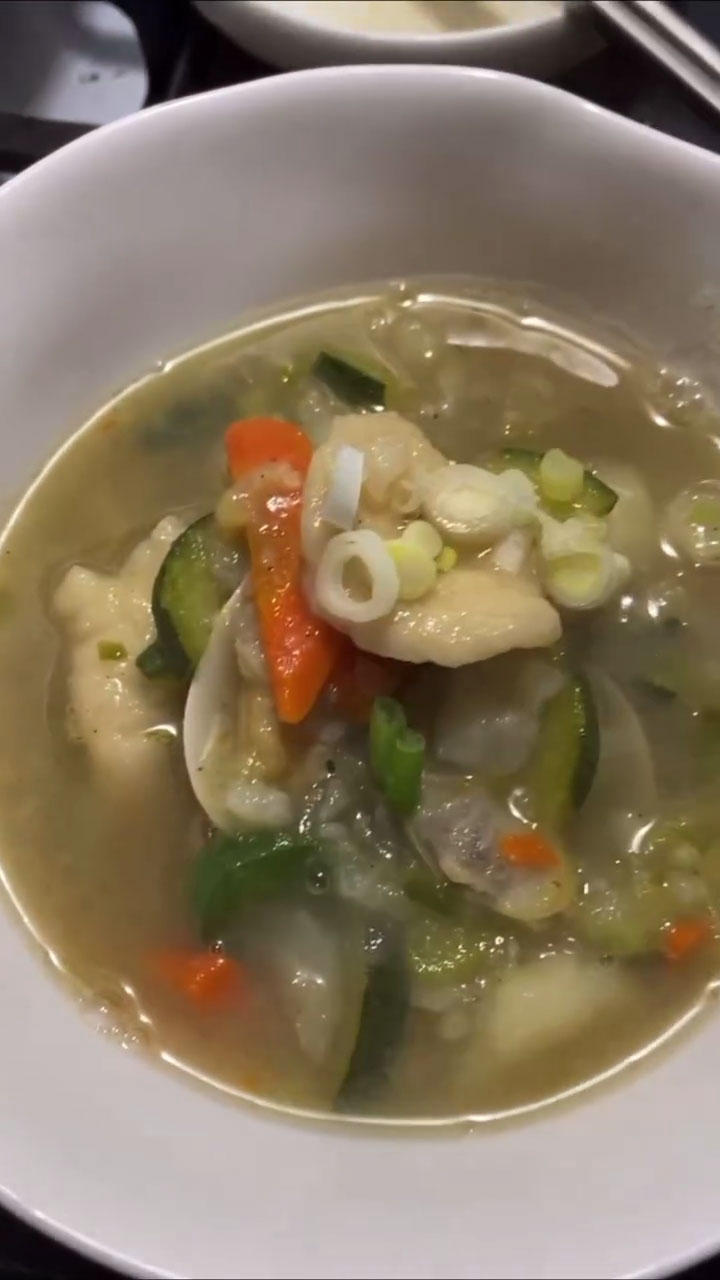
To serve, you can enjoy this with kimchi—just like in kalguksu. After the soup, it is also common to have some bindaetteok—a warm dessert after a warm soup! This will keep you cozy on a winter night and is best shared amongst family and friends!
Other Korean noodle dishes you might like:
Make sure to leave a rating, a comment, or tag me on Facebook, Instagram, or Tiktok when you chop them up! Yeobosayo!
Sujebi (Hand-Torn Noodle Soup)
Ingredients
Sujebi Dough
- 1 cup All Purpose Flour
- 1/3 cup Water
- 1/2 tsp Salt
Sujebi Broth
- 8 cups Water
- 6 grams Dashima
- 5 grams Dried Shrimp
- 10 pieces Dried Anchovy Deheaded and degutted
- 300 grams Korean Radish
Sujebi Noodle Soup
- 1/4 of Whole Onion Julienne
- Jalapeno Chopped
- 30 grams Carrots Matchsticks
- 100 grams Zucchini Moon-shaped
- 250 grams Potatoes Moon-shaped
- 2 stalks Scallions 1 chopped for garnish, 1 sliced into 2-3 inches to mix in the soup
- 250 grams Short Neck Clam
- 1/2 tbsp Soy Sauce
- 1/2 tsp Salt
- Black Pepper To taste
Instructions
Sujebi Dough
- Combine flour, water, and salt. Mix with a fork or chopstick until the flour has clumped up.
- When clumped, compress it and start kneading by pressing it down with the bottom of the palm of your hand, turn it, and then press it down again on the other side. Do this for 50 to 100 times to hydrate the flour and make the dough chewy.
- Place the dough in a bag and refrigerate for 30 minutes to an hour.
Sujebi Broth
- Remove the head and gut of the dried anchovies.
- In a deep pot, boil water with dried kelp, dried shrimp, cleaned dried anchovies, and Korean radish. Allow it to continue boiling for 20 to 30 minutes.
- After boiling, sift the dried items and place back the soup stock into a deep pot.
Sujebi Noodle Soup
- Prepare the vegetables—chop the jalapenos, julienne the onions, slice into moon-shapes the zucchini and potatoes, make thick matchsticks of the carrots, and chop half of the scallions and slice the other half into 3-inch pieces.
- Bring the soup stock to a boil, and add the potatoes and carrots first. Boil them for about 5 minutes.
- Add zucchini, onion, scallions, and pepper. Boil it for a couple more minutes. Add the clams.
- Bring out your dough and using your index finger and thumb, press it together with the dough until it forms a thin sheet. Tear it using your hands and place it directly into the soup. Do this until you run out of dough.
- Allow the noodles to boil for 5 minutes until it is cooked, stirring occasionally. The noodles should float on top and the vegetables should be tender.
- Taste the soup and adjust with salt and add more spice if you like.


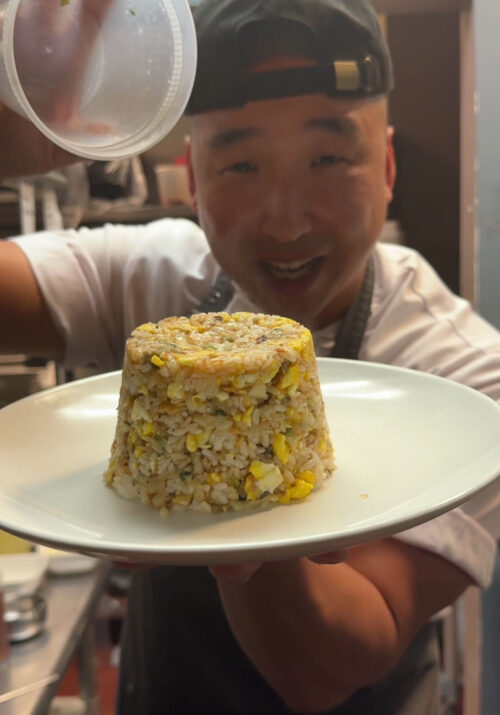
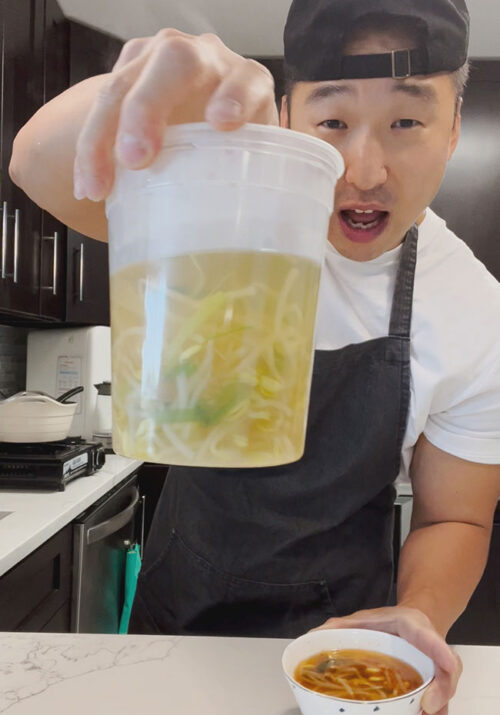


Leave a Reply